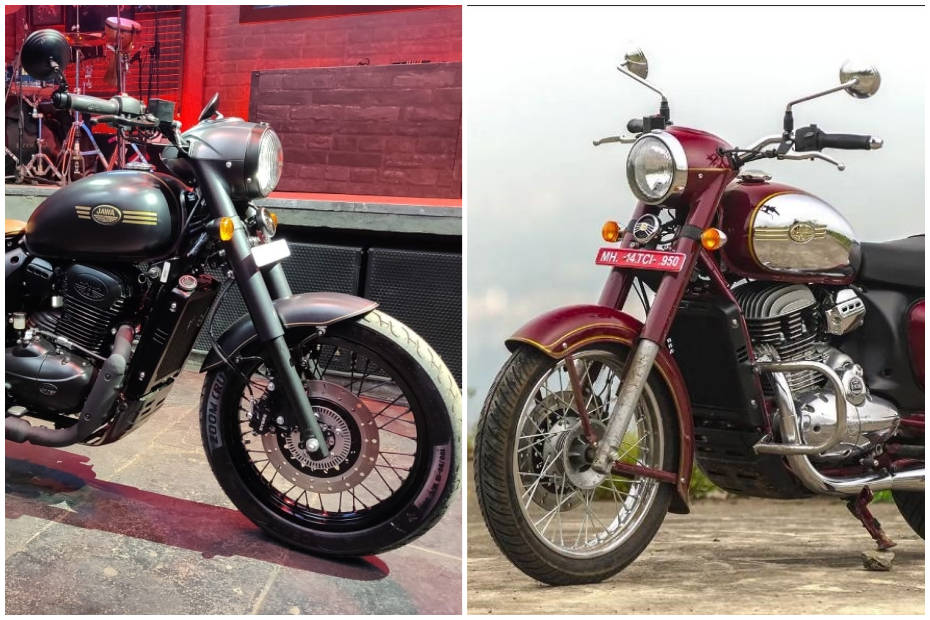Jawa Perak vs Standard Jawa: Differences Explained
Modified On Jul 16, 2020 02:44 PM By Praveen M.for Jawa Perak
- 2963 Views
These two bikes cater to two different genres, and we list out all the differences
[UPDATE: The Jawa Perak BS6 specifications have been updated. It is slightly torquier than before and you can read all about it here.]

A year after it was unveiled, Jawa has finally launched the Perak factory custom bobber in the country. It is India’s most affordable bobber with a price tag of Rs 1,94,500 (ex-showroom Delhi). This makes it more expensive than the regular Jawa by Rs 30,500. Jawa has put a lot of effort into making the Perak a true-blue factory custom unlike the Royal Enfield Thunderbird 500X. Here’s how the Perak is different from the standard Jawa:
Bigger engine with cleaner emissions:

The Jawa Perak’s engine is derived from the regular Jawa’s heart. However, its displacement has been bumped from 293cc to 334cc by reboring the engine. However, the stroke length remains unchanged. With this setup, the engine makes 30PS and 31Nm, which is 3.1PS and 3Nm more than the standard Jawa.
Though the engine is bigger, the bobber retains the same 6-speed transmission as the regular Jawa. However, unlike the regular Jawa (and the Jawa Forty Two for that matter), the Perak’s powerplant is BS6-compliant and this makes it the first Jawa motorcycle to comply with the upcoming emission norms.
Different underpinnings:

The Perak’s double-cradle frame features a unique swingarm construction for that quintessential hardtail look. This unit looks similar to the Triumph Bonneville Bobber’s ‘swing cage’ swingarm and allows the bike to have a sweeping design line that extends from the steering head to the rear axle. The rear comes with a monoshock that’s neatly hidden under the seat to give the motorcycle a proper hardtail look.
The major disadvantage of this setup is that it cannot accommodate a pillion seat since there’s no subframe to speak of in the first place. On the other hand, the regular Jawa comes with a traditional subframe with twin shock absorbers at the rear. It gets a flat single-piece seat that’s long enough to fit two riders.
Up front, the motorcycle gets a traditional telescopic fork from Gabriel which looks similar to the one in the standard Jawa. However, its internals have been tweaked to suit the bike’s weight and dynamics.

Single-channel ABS variant shown for representation
Like the dual-channel ABS variant of the standard Jawa, the Perak too comes with a disc brake at both ends (280mm front, 240mm rear) and ABS from Continental. Though the two bikes roll on the same spoke wheels (18-inch front and 17-inch rear), the Perak features fatter rubber on both ends. It rides on 100-section front and 140-section rear Ceat Zoom Cruz tyres. On the other hand, the Jawa rides on slimmer MRF Nylogrip Zapper tyres measuring 90-section at the front and 120-section at the rear.
Different dimensions too:

Due to the Perak’s inherent design, its dimensions are also different from the regular Jawa. At 1485mm, the Perak’s wheelbase is 116mm longer. Its single seat is just 750mm above the ground, which makes it 15mm lower than the standard Jawa. Interestingly, despite the minimal bodywork, the bike weighs 9kg heavier (179kg, kerb) than the standard Jawa. It could be because of the bigger engine, redesigned swingarm as well as fatter tyres. Jawa has retained the same 14-litre fuel tank in the Perak so that the range isn’t compromised.

One minor difference in terms of design is that the Perak uses stylish bar-end mirrors whereas the standard Jawa uses conventionally mounted units. Both bikes get the same analogue instrument cluster with a digital inset. However, the Perak’s console offers contrast for enhanced visibility while on the move.
